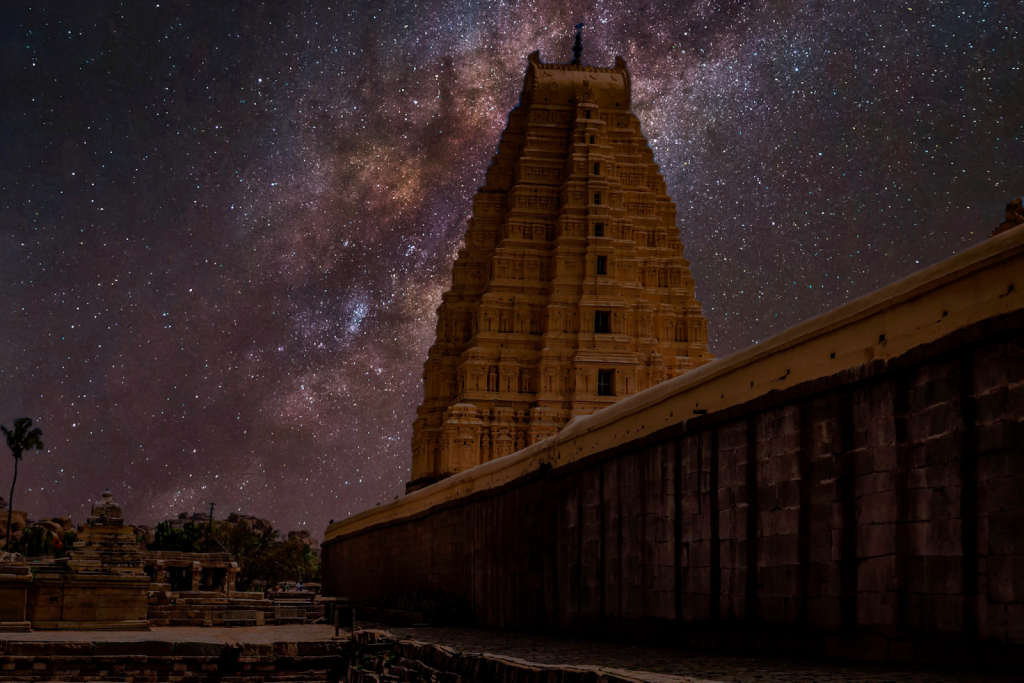India possesses, without a doubt, a deep antiquity with an opulent cultural history. What makes India’s heritage even more intriguing to the world is that it has its roots in astronomy and is reflected in India’s temple architecture, calendar, and festivals. Many of India’s annual celebrations are based on astronomical events and are held at specific times of the year according to the positions of the planets and stars. In India, astronomy is a way of life. Its profound cultural integration is directly related to how mythological and historical texts incorporate astronomical concepts and ideas as a means of storytelling and expression. The ancient Indians believed the universe was infinite and eternal and governed by natural laws that could be understood through observation and reflection. As a direct result, astronomy became essential to their cultural, religious, and philosophical practices.
At a time when the world is exploring new avenues of tourism to expand cultural appeals, such as ecotourism and astrotourism, it is only logical that the Indian government can envision and implement a new type of ‘Cultural Astrotourism’ that promotes the scientific wealth of our culture to a broader citizenry. This would be a more amicable approach to uniting the past with the present and developing a highly appealing system of scientific thought.
A reasonable initial step in promoting India’s heritage and history to a scientifically adept generation is to bring in a new type of Multicultural Astrotourism that combines the wisdom of our past with the forward thought of the future.
Astrotourism is the practice of travelling to specific locations to observe and appreciate astronomical events and phenomena, such as eclipses, meteor showers, and other astronomical events. Numerous not-for-profit organisations are now attempting to incorporate astronomy and sustainability into their tourism strategies, and this appeal has prompted even state governments to pick up the tab.
When choosing locations for astronomy tourism, the two most important factors are the presence of dark skies and unaltered landscapes. Years of experience in public outreach have taught me that it is challenging to conduct astronomy outreach under a light-polluted sky and that it is difficult to impart the fascination of the universe to the general public by merely displaying a few planets and stars.
Hence the appeal of astrotourism is limited to visiting areas with dark skies and remote regions. Places such as Ladakh, Spiti, and parts of Rajasthan are becoming increasingly popular due to their dark skies and tourism appeal. However, in most of these places, the aesthetic appeal of the location is the primary factor that sustains tourism rather than astronomy. Can a novel approach incorporate the cultural elements in our Scientific Astronomy outreach efforts? The primary intent behind such a noble quest would be to understand both sides better and foster a common ground of unity.
How appealing would it be if historical monuments that celebrate ancient India’s astronomical aptitude were included in the Astrotourism circuits and the scientific principles behind them were disseminated to the public?
Consider, for instance, the Padmanabhaswamy Temple in Thiruvananthapuram. It is one of the many fascinating cases in which astronomy and architecture have influenced the design and construction of Hindu temples in India. Twice annually, an extraordinary visual spectacle clarifies the precise orientation of the primary gopuram. On equinox days, observing the setting Sun passing through each gopuram’s window openings with approximately five-minute intervals between each passage is possible.
The Konark Sun Temple, which is located in Odisha, is yet another fascinating temple. It was constructed in the thirteenth century and is dedicated to the sun-related Hindu god Surya. The temple is designed to resemble a chariot, and its 12 wheels represent the 12 months of the year. The temple was believed to be used to track the Sun’s movement using a calendar. The temple’s architecture and carvings have close ties to astronomical concepts.
The Hampi Vittala Temple dates back to the 15th century and is located in Hampi’s UNESCO World Heritage Site. It is believed that astronomical observations were conducted at the shrine, which is shaped like a chariot and situated within the temple. The shrine is supported by wheels that revolve about a central axis, and the structure is designed so that the shadow of a gnomon is cast onto a progression of graduated quadrants on the temple’s floor.
The Hindu lunisolar calendar is based on calculations performed using ancient astronomical data. Modern religious ceremonies and celebrations continue to employ it. The relative positions of the Sun and the moon determine the Hindu calendar. It uses a sophisticated intercalation method to synchronise perfectly with the solar year. Therefore, the Hindu calendar is evidence of the advanced astronomical knowledge of ancient India and its connection to the religious practices and rituals of the time.
These are just a few examples that showcase astronomy’s beauty and its concepts hiding in day-to-day life. Historic scientific observatories and labs from research institutes that celebrate modern Indian scientific icons can also promote a day each month or bring Scientific festivals to actively engage with the public to bring out the current trends and areas in research whilst promoting rational thought and intellectual appeal that can provide an enriching experience as a means of cultural, scientific tourism.
Exploring historical sites, temples, and modern observatories linked to Astronomy can provide travellers with a unique and enriching experience. Our nation places astronomy and a passion for the stars at the heart of its culture. While this article is myopic in terms of mentioning just a handful of temples, the Indian Subcontinent is replete with locations that have a significant appeal for uniting modernity and ancient culture. Scientific organisations must also partner with tourism organisations to open their doors, embrace outreach, and promote scientific-based tourism attractions. Such outreach will enable individuals to comprehend, question, and be curious about our past while embracing the elements that will facilitate scientific comprehension.





